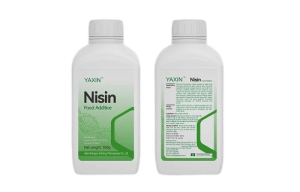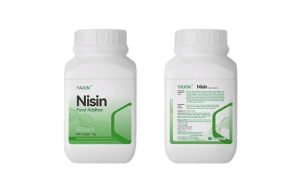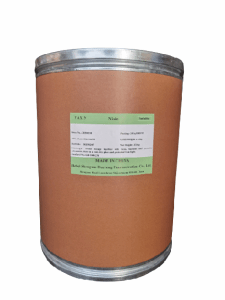
 CONTACT
CONTACT
- Linkman:Linda Yao
- Tel: +8618231198596
- Email:linda.yao@dcpharma.cn
- Linkman:CHARLES.WANG
- Department:Overseas
- Tel: 0086 0311-85537378 0086 0311-85539701
Imported ε-Polylysine Hydrochloride,Inhibition of Pathogenic Bacteria in Food
TIME:2024-12-30ε-Polylysine hydrochloride is a natural preservative derived from the controlled fermentation of Streptomyces albulus or Streptomyces diastatochromogenes, followed by ion-exchange resin adsorption, desorption, and purification. It exhibits significant inhibitory effects against a variety of pathogenic microorganisms in food. The following is a detailed analysis of the antimicrobial properties of ε-polylysine hydrochloride in food:
I. Broad-Spectrum Antimicrobial Activity
ε-Polylysine hydrochloride has broad-spectrum antimicrobial activity, effectively inhibiting the growth of both Gram-positive and Gram-negative bacteria, as well as yeasts, molds, and other microorganisms. Specifically, it has strong inhibitory effects against Gram-negative bacteria such as Escherichia coli and Salmonella, and Gram-positive bacteria such as *Staphylococcus aureus. Additionally, it can also inhibit the activity of some viruses and bacteriophages.
II. Minimum Inhibitory Concentration (MIC)
The minimum inhibitory concentration (MIC) of ε-polylysine hydrochloride for bacteria is relatively low, meaning that it can inhibit bacterial growth at lower concentrations. However, the required inhibitory concentration for yeasts and molds is higher. Therefore, when targeting different types of microorganisms, the appropriate amount of ε-polylysine hydrochloride should be determined based on its MIC.
III. High-Temperature Stability
ε-Polylysine hydrochloride remains stable under high-temperature conditions (e.g., 121°C for 30 minutes) without decomposing. This characteristic makes it particularly suitable for use in food heat treatment processes, such as high-temperature sterilization and canned food production, where it continues to exert antimicrobial effects under such conditions.
IV. High Solubility and Wide pH Range
ε-Polylysine hydrochloride is highly soluble in water, with a solubility of at least 500g/L. It also maintains strong antimicrobial activity across a pH range of 2 to 9. This property makes it versatile for use in various acidic and alkaline foods, compensating for the lower activity of other preservatives in neutral and alkaline conditions.
V. Synergistic Effects
When used in combination with other food additives (such as acetic acid, ethanol, glycine, and organic acids), ε-polylysine hydrochloride can produce a synergistic effect, further enhancing its antimicrobial efficacy. This synergistic action makes its application in food preservation more flexible and effective.
VI. High Safety
The safety of ε-polylysine hydrochloride is high, with acute toxicity tests showing an LD50 of 5g/kg, similar to that of table salt. After ingestion, it is degraded into lysine, a nutritional amino acid, which is absorbed and utilized by the body without any toxic side effects. Therefore, it is widely used in various foods, such as cakes, pastries, fast food, butter, salad dressings, beverages, meat products, canned foods, and more.
VII. Application Examples
In practical applications, ε-polylysine hydrochloride has been widely used to extend the shelf life of foods. For example, adding 0.1g/kg of it to rice can extend its shelf life from 1 day to 5 days. When used in combination with citric acid, acetic acid, and other compounds, the shelf life of rice can be extended to over a week. Soaking rice cakes in a solution of 0.5–1g/kg ε-polylysine hydrochloride for 10 minutes can effectively inhibit microbial growth and extend the shelf life of rice cakes.
As a natural, safe, and efficient food preservative, ε-polylysine hydrochloride has significant advantages in inhibiting the growth of pathogenic microorganisms in food and shows a broad potential for application.
- Tel:+8618231198596
- Whatsapp:18231198596
- Chat With Skype







